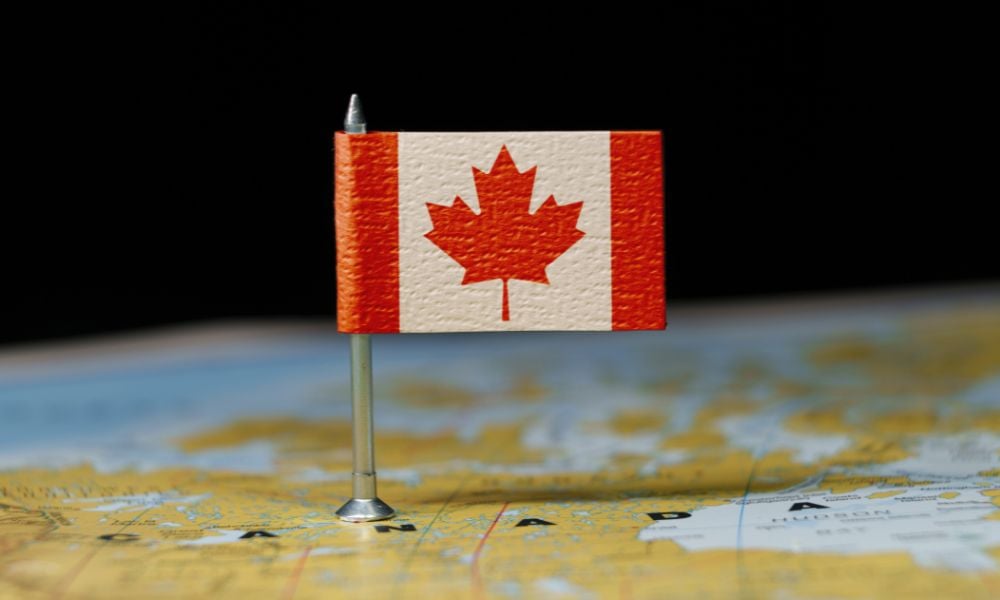Do you want to have a Certified Financial Planner designation? Find out what it takes to become one. We’ll cover all that you need to know in this guide

- Introduction to Certified Financial Planner designation
- How do you become a certified financial planner in Canada?
- Duties and responsibilities of a Certified Financial Planner (CFP)
- How long does it take to get CFP designation in Canada?
- Are financial planners in demand in Canada?
- Is becoming a Certified Financial Planner (CFP) worth it?
Updated July 30, 2025
One of the most respected paths in financial planning is the Certified Financial Planner (CFP) designation. Recognized as the gold standard in financial planning, the CFP shows that you have the knowledge, training, and ethical commitment to guide clients through complex financial decisions. But what exactly does it take to earn this credential? How long does it take, and is it really worth the effort?
In this article, Wealth Professional Canada will explore everything you need to know about becoming a Certified Financial Planner in Canada. We’ll walk you through the education and work requirements, the certification process, and the benefits of earning the CFP designation. If you're thinking about a long-term career in finance, this guide can help you decide if becoming a CFP is right for you.
Introduction to Certified Financial Planner designation
The Certified Financial Planner designation is one of the most recognized financial planning designations in the world. Considered the gold standard for the profession, CFP professionals are expected to have the required knowledge, skills, and experience to uphold the profession.
They also have high ethical standards to examine their clients’ financial situation, then deliver comprehensive financial plans for the best outcomes.
As CFPs are also held to a fiduciary standard, they do all this work in their clients’ best interests.
The Certified Financial Planner designation also serves as formal recognition of a finance professional’s expertise in these areas:
- taxation
- insurance
- financial planning
- retirement savings
- estate or succession planning
How do you become a certified financial planner in Canada?
You can get Certified Financial Planner designation by taking the FP Canada Institute’s Technical Education - Fundamentals and Advanced or a Fundamentals and Advanced program recognized by FP Canada.
After that, you must successfully complete the FP Canada Institute - CFP Professional Education Program.
What are the course paths to getting CFP designation?
Those aspiring to get CFP designation must first have the requisite education, including a post-secondary degree.
You can apply for CFP designation once you have:
- met the requisite education requirement
- passed the exam
- earned at least three years of qualified work experience in financial planning
You can also pursue the designation and take the CFP exam while you gain enough work experience.
Candidates who hold certain other designations or licenses may be eligible for education exemptions or alternative paths to certification. Details are available on the FP Canada website.
On the CFP certification licence and trademark
The Certified Financial Planner certification is granted under licence by FP Canada to those who have:
- met its educational standards
- passed the CFP exam
- met the work experience requirement
- agreed to abide by the FP Canada Code of Ethics
FP Canada is the authority that certifies financial planners in Canada. It was formerly known as Financial Planning Standards Council of Canada.
Duties and responsibilities of a Certified Financial Planner
A Certified Financial Planner (CFP) has many duties, the foremost of which is assisting their clients in managing their finances.
This role means having to guide clients in various aspects of financial planning, including:
- retirement planning
- investment planning
- insurance
- education planning
A CFP’s primary duty is to provide their clients with a complex financial plan or roadmap that is holistic and comprehensive. CFPs usually begin their financial services by evaluating their clients’ current finances, whether it’s cash, assets, investments, or properties.
They also look at clients’ liabilities, including mortgages and student debt. They will then come up with an estimate of their clients’ income and net worth.
After completing the financial assessment, they work with their clients to come up with a customized financial plan. For example, assuming they have a client nearing retirement, a CFP will create a financial plan that can see them through their retirement years. Or maybe they have a client with a child who’s soon starting college. A CFP can likewise create a financial plan to help them manage the cost of tuition and other expenses.
CFPs and fiduciary duty
All CFPs in Canada are held to the FP Canada Standards Council Standards of Professional Responsibility, including a code of ethics. This includes a duty of loyalty that requires them to act in the best interest of their clients.
Let's say a CFP would earn more with a certain financial product, while another product would make more money for their client. The certified financial planner is bound to use the product that benefits their clients more. CFPs can lose their designation if they fail to conform.
What’s the difference between a CFP and a PFP?
The CFP is the gold standard in financial planning designed for most any finance professional to earn, while the Personal Financial Planner (PFP) designation is specifically for bankers, mutual fund representatives, and investment advisors.
The PFP designation was originally intended to train bank employees so they could offer financial advice to their clients.
How long does it take to get CFP designation in Canada?
There are three possible pathways to getting CFP designation:
1. With no post-secondary degree
If you go down this route, you need at least ten years of work experience after graduation before you are eligible for CFP certification.
2. With a post-secondary degree
If you have a post-secondary degree (or international equivalent), you need at least three years of qualifying work experience.
3. With QAFP certification
Candidates with Qualified Associate Financial Planner (QAFP) designation must have a 2-year diploma from an accredited post-secondary education institution (or international equivalent). They must also have one year of qualifying work experience.
This is a rough guide. The time it takes to complete all required education can vary.
Here’s a video from FP Canada that gives some no-nonsense reasons for taking on CFP designation. Listen to several financial advisors and financial planners as they talk about their experiences:
If you’re looking for financial planners to look up to, visit our Best in Wealth page. Here you’ll find award-winning professionals in the financial services industry, some of whom have Certified Financial Planner (CFP) designations.
Certification fees and other requirements
Should you pass the CFP examination and finally get CFP designation, there are continuing requirements and recurring fees.
CFPs also required to earn Continuing Education (CE) credits, which are audited every two years. This involves having 25 hours of CE annually. CFPs can find CE opportunities with the Continuing Education search tool.
FP Canada requires continuing education each year to help financial planners with their ongoing professional development. The end goal is to provide quality service to clients.
To renew your certification, state on your annual renewal application that you have completed the required CE for the previous calendar year.
Are financial planners in demand in Canada?
Yes, financial planners are in high demand. This surge is driven by an aging population nearing retirement, increased financial complexity, and a growing need for personalized financial advice.
Reports show strong job prospects for financial planners across most provinces, with particularly favorable outlooks in Manitoba, Québec, and Prince Edward Island.
A growing portion of current financial advisors are approaching retirement age, creating opportunities for new professionals to enter the field. Those holding a CFP or QAFP certification can potentially earn up to $200,000 per year.
According to FP Canada, here are the top 10 employers of financial planners:
- Royal Bank of Canada (RBC)
- IG Wealth Management
- TD Bank
- Canadian Imperial Bank of Commerce (CIBC)
- Bank of Montreal (BMO)
- Sun Life
- Scotiabank
- CI Assante Wealth Management
- Manulife
- Canada Life
Overall, having either a CFP or QAFP certification can provide more opportunities for career growth. These designations can enhance your credibility and allow you to stand out in a competitive job market.
Is becoming a Certified Financial Planner (CFP) worth it?
In today’s financial environment where not many Canadians are keen on investing, there is a need for CFPs; there will likely be a greater need for their CFP knowledge and expertise.
Considering the time, effort, and costs of becoming a Certified Financial Planner weighed against the possible benefits, getting CFP designation can be worth it. In fact, pursuing this certification can sometimes be the starting point of some amazing personal success stories. However, the CFP designation is only worth having if the individual advisor works to make it so.
CFP designation is not something a financial advisor can take for granted. As with other knowledge-intensive professions like doctors and lawyers, CFPs must continually update their knowledge and skills through their practice and continuing education.
For financial planners, obtaining CFP designation is one of the most viable career moves. As CFP status can be difficult to earn and maintain, having it confers a degree of prestige and credibility to the financial planner, their practice, or their employer.
Read next: What is the fee for a financial planner?
Want to read similar articles about financial advisor designations and best practices? Feel free to check out our Investor Resources page.



